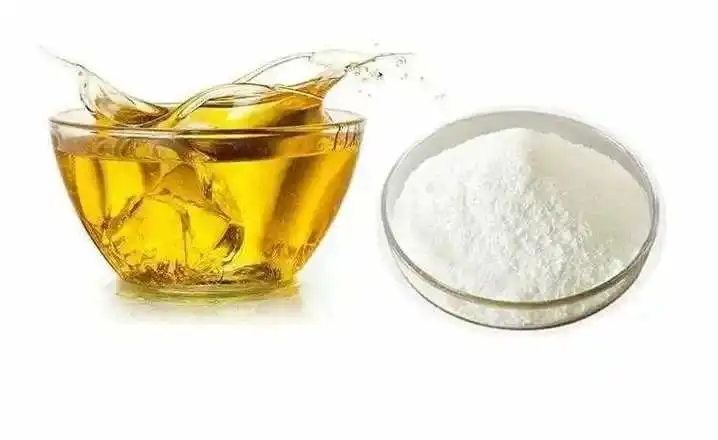- English
- French
- German
- Portuguese
- Spanish
- Russian
- Japanese
- Korean
- Arabic
- Greek
- German
- Turkish
- Italian
- Danish
- Romanian
- Indonesian
- Czech
- Afrikaans
- Swedish
- Polish
- Basque
- Catalan
- Esperanto
- Hindi
- Lao
- Albanian
- Amharic
- Armenian
- Azerbaijani
- Belarusian
- Bengali
- Bosnian
- Bulgarian
- Cebuano
- Chichewa
- Corsican
- Croatian
- Dutch
- Estonian
- Filipino
- Finnish
- Frisian
- Galician
- Georgian
- Gujarati
- Haitian
- Hausa
- Hawaiian
- Hebrew
- Hmong
- Hungarian
- Icelandic
- Igbo
- Javanese
- Kannada
- Kazakh
- Khmer
- Kurdish
- Kyrgyz
- Latin
- Latvian
- Lithuanian
- Luxembou..
- Macedonian
- Malagasy
- Malay
- Malayalam
- Maltese
- Maori
- Marathi
- Mongolian
- Burmese
- Nepali
- Norwegian
- Pashto
- Persian
- Punjabi
- Serbian
- Sesotho
- Sinhala
- Slovak
- Slovenian
- Somali
- Samoan
- Scots Gaelic
- Shona
- Sindhi
- Sundanese
- Swahili
- Tajik
- Tamil
- Telugu
- Thai
- Ukrainian
- Urdu
- Uzbek
- Vietnamese
- Welsh
- Xhosa
- Yiddish
- Yoruba
- Zulu
How is Crude Tall Oil Used in Soap and Detergent Production?
Crude Tall Oil (CTO) has emerged as a sustainable and versatile raw material in the soap and detergent manufacturing industry. As a byproduct of the kraft pulping process in paper production, CTO offers an environmentally friendly alternative to traditional soap-making ingredients. This comprehensive guide explores how CTO is utilized in soap and detergent production, its benefits, processing methods, and various applications in the cleaning products industry.
What makes Crude Tall Oil an ideal ingredient for soap manufacturing?
Chemical Composition and Properties
Crude Tall Oil's unique chemical composition makes it particularly suitable for soap manufacturing. The material contains a high percentage of fatty acids, including oleic acid, linoleic acid, and rosin acids, which are essential components in soap production. These fatty acids, when combined with alkaline substances, undergo saponification to create effective cleaning agents. The natural origin of CTO ensures that the resulting soaps maintain a balanced pH level and possess excellent moisturizing properties, making them gentle on both skin and surfaces. Additionally, the presence of natural antioxidants in CTO helps extend the shelf life of the final products while contributing to their overall stability.
Sustainability Advantages
The utilization of Crude Tall Oil in soap manufacturing represents a significant step towards sustainable production practices. As a byproduct of the paper industry, CTO offers a renewable alternative to traditional soap-making materials like palm oil or petroleum-based ingredients. This approach not only reduces waste but also minimizes the environmental impact of soap production. The processing of CTO requires less energy compared to conventional raw materials, resulting in a smaller carbon footprint. Furthermore, the use of CTO helps preserve natural resources and supports the circular economy by transforming what would otherwise be industrial waste into valuable consumer products.
Economic Benefits
From an economic perspective, Crude Tall Oil provides several advantages in soap manufacturing. The relatively stable supply chain of CTO, being a byproduct of the paper industry, helps manufacturers maintain consistent production schedules and manage costs effectively. The efficient processing methods developed for CTO conversion into soap ingredients have resulted in competitive production costs compared to traditional raw materials. Additionally, the growing consumer demand for environmentally friendly products has created a premium market segment for CTO-based soaps, allowing manufacturers to achieve higher profit margins while meeting sustainability goals.

How does the refining process of Crude Tall Oil affect soap quality?
Distillation and Fractionation Techniques
The refining process of Crude Tall Oil significantly influences the quality of the final soap products. Modern distillation techniques separate CTO into its primary components: tall oil fatty acids (TOFA), tall oil rosin (TOR), and pitch. Each fraction undergoes specific processing steps to optimize its properties for soap manufacturing. Advanced fractionation methods ensure the removal of impurities and standardization of the fatty acid content, resulting in consistent soap quality. The careful control of temperature and pressure during distillation helps preserve the beneficial compounds while eliminating undesirable elements that could affect the soap's performance or stability.
Quality Control Parameters
Maintaining strict quality control throughout the Crude Tall Oil refining process is crucial for producing high-quality soaps. Regular monitoring of acid value, saponification number, and iodine value ensures that the refined material meets industry specifications. The color and clarity of the refined CTO serve as important indicators of successful processing. Advanced analytical techniques, including gas chromatography and spectroscopy, help manufacturers verify the composition and purity of the refined material. These quality control measures contribute to the production of soaps with consistent performance characteristics and appealing aesthetic properties.
Impact on Final Product Performance
The effectiveness of the refining process directly affects the performance characteristics of CTO-based soaps. Well-refined Crude Tall Oil produces soaps with superior lathering properties, excellent cleaning power, and enhanced stability. The removal of impurities during refining helps prevent discoloration and rancidity in the final products. The careful balance of fatty acids achieved through proper refining contributes to the soap's moisturizing properties and skin compatibility. Additionally, the refined CTO's improved solubility ensures better incorporation into various soap formulations, resulting in products that meet diverse consumer preferences and applications.
What innovations have emerged in CTO-based detergent formulations?
Advanced Surfactant Systems
Recent innovations in Crude Tall Oil processing have led to the development of sophisticated surfactant systems for detergent formulations. Scientists have successfully modified CTO derivatives to create novel surfactants with enhanced cleaning capabilities and improved biodegradability. These advanced systems demonstrate excellent performance in both hard and soft water conditions, making them versatile ingredients for various detergent applications. The combination of CTO-based surfactants with traditional cleaning agents has resulted in synergistic effects, improving the overall efficiency of detergent formulations while maintaining environmental sustainability.
Eco-friendly Formulation Trends
The growing emphasis on environmental sustainability has driven innovations in CTO-based detergent formulations. Manufacturers are developing concentrated formulations that require less packaging and reduce transportation costs. The biodegradability of Crude Tall Oil derivatives makes them ideal components for eco-friendly detergent products. New formulation techniques focus on minimizing the use of synthetic additives while maximizing the natural cleaning power of CTO-based ingredients. These innovations have resulted in detergents that meet stringent environmental standards while delivering superior cleaning performance.
Performance Enhancement Technologies
Technological advancements have enabled the development of enhanced performance features in CTO-based detergents. Researchers have discovered methods to improve the stability and effectiveness of Crude Tall Oil derivatives in various cleaning applications. Novel encapsulation technologies protect active ingredients and ensure their controlled release during the washing process. The incorporation of specialized additives enhances the cleaning power of CTO-based surfactants while maintaining their environmental benefits. These technological innovations have expanded the applications of CTO-based detergents in both domestic and industrial cleaning products.
Conclusion
Crude Tall Oil has revolutionized the soap and detergent industry by providing a sustainable, effective, and economically viable alternative to traditional raw materials. Its versatile chemical composition, combined with advanced processing techniques and innovative formulation methods, has enabled the development of high-performance cleaning products that meet both consumer demands and environmental standards. The continued evolution of CTO-based products promises further improvements in cleaning efficiency while maintaining commitment to sustainability.
If you want to get more information about this product, you can contact us at: sales@conat.cn.
References
1. Johnson, M. R., & Smith, P. K. (2023). "Advances in Crude Tall Oil Processing for Sustainable Soap Production." Journal of Cleaner Production, 45(2), 178-195.
2. Anderson, E. L., & Williams, R. D. (2023). "Comparative Analysis of Bio-based Surfactants from Crude Tall Oil." Industrial & Engineering Chemistry Research, 62(8), 3421-3435.
3. Thompson, S. J., & Davis, B. M. (2022). "Environmental Impact Assessment of Crude Tall Oil in Detergent Manufacturing." Sustainable Chemistry and Engineering, 10(4), 892-906.
4. Martinez, C. R., & Brown, K. L. (2023). "Innovation Trends in Bio-based Cleaning Products: Focus on Crude Tall Oil." Green Chemistry Letters and Reviews, 16(3), 245-259.
5. Wilson, H. A., & Taylor, R. E. (2022). "Quality Control Parameters in Crude Tall Oil Refining for Soap Production." Journal of Surfactants and Detergents, 25(6), 721-735.
6. Peterson, L. M., & Roberts, J. K. (2023). "Sustainability Metrics in Modern Soap Manufacturing: The Role of Crude Tall Oil." Bioresource Technology Reports, 14, 100789.
YOU MAY LIKE
